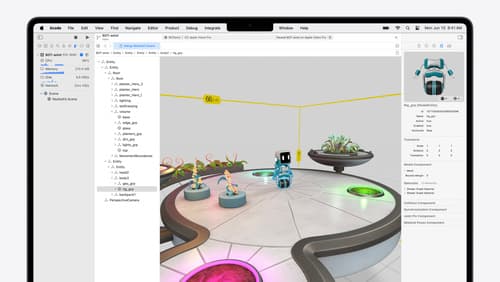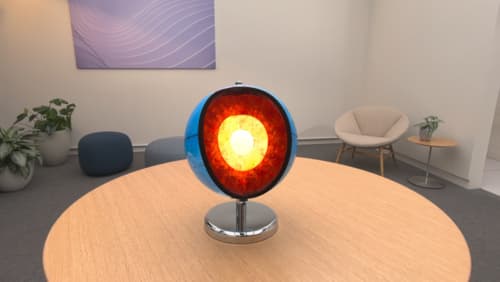Why might macOS Preview successfully play animation in a USDZ file, but a RealityKit on visionOS cannot play the same animation?
Asked on 2024-07-31
1 search
The issue where macOS Preview successfully plays animation in a USDZ file, but RealityKit on visionOS cannot, could be due to several factors:
-
File Format and Dependencies: USDZ files are great for publishing and distributing assets because they package all dependencies such as textures into a single file. However, they can't be edited without unzipping. If the animation relies on certain dependencies or specific configurations that are not correctly interpreted by RealityKit, this could cause issues. (Optimize your 3D assets for spatial computing)
-
Coordinate Systems and Transformations: RealityKit uses a specific coordinate system (negative Z is forward, Y is up, and positive X is right). If the animation in the USDZ file does not align with this coordinate system, it might not play correctly in RealityKit. (Optimize your 3D assets for spatial computing)
-
Rendering Engines: RealityKit and macOS Preview might handle rendering differently. RealityKit is a real-time engine optimized for spatial experiences, while macOS Preview might use different rendering techniques that are more forgiving or handle certain aspects of the USDZ file differently. (What’s new in USD and MaterialX)
-
Variants and API Support: RealityKit supports the ability to specify variants when loading a USD file. If the animation relies on specific variants that are not correctly specified or supported in RealityKit, this could cause the animation to fail. (What’s new in USD and MaterialX)
-
Debugging Tools: Using the RealityKit debugger can help identify issues with the animation. The debugger allows you to inspect the entity hierarchy and transformations, which can help pinpoint where the animation might be failing. (Break into the RealityKit debugger)
Relevant Sessions
- Optimize your 3D assets for spatial computing
- What’s new in USD and MaterialX
- Break into the RealityKit debugger
If you need more specific details or a deeper dive into any of these aspects, please let me know!

Optimize for the spatial web
Discover how to make the most of visionOS capabilities on the web. Explore recent updates like improvements to selection highlighting, and the ability to present spatial photos and panorama images in fullscreen. Learn to take advantage of existing web standards for dictation and text-to-speech with WebSpeech, spatial soundscapes with WebAudio, and immersive experiences with WebXR.

Break into the RealityKit debugger
Meet the RealityKit debugger and discover how this new tool lets you inspect the entity hierarchy of spatial apps, debug rogue transformations, find missing entities, and detect which parts of your code are causing problems for your systems.

Explore object tracking for visionOS
Find out how you can use object tracking to turn real-world objects into virtual anchors in your visionOS app. Learn how you can build spatial experiences with object tracking from start to finish. Find out how to create a reference object using machine learning in Create ML and attach content relative to your target object in Reality Composer Pro, RealityKit or ARKit APIs.
